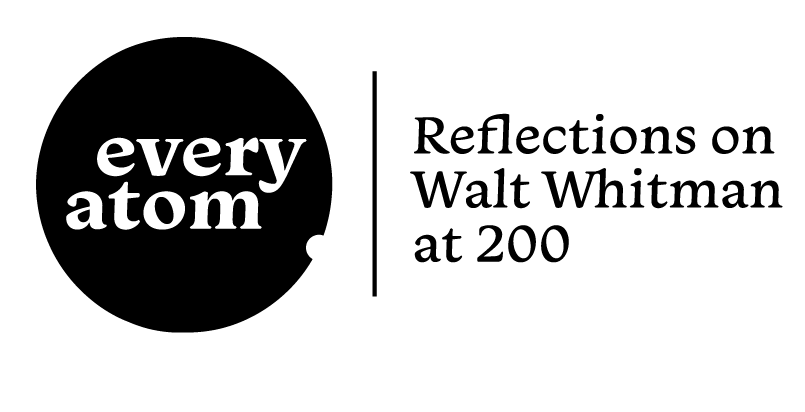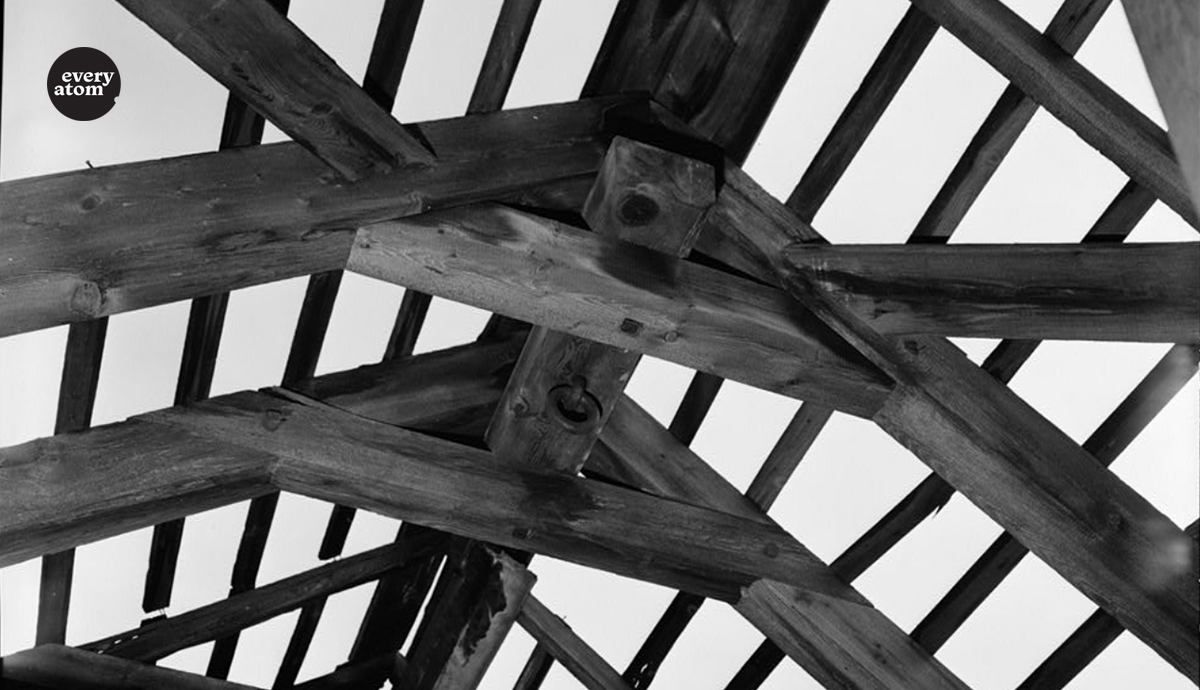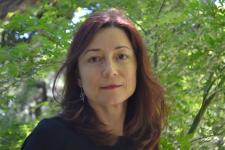Introduction to Every Atom by project curator Brian Clements

Sure as the most certain sure . . . . plumb in the uprights, well entretied, braced in the beams,
Stout as a horse, affectionate, haughty, electrical,
I and this mystery here we stand.
Whitman whispers the most brilliant redundancies. Sure already conveys the state of being certain about something, so why does it bear repeating? The word is an elastic band, stretched against its own meaning: by the time we reach the ellipsis, sure has snapped from an adjective into a superlative noun, the most certain sure. Everything that’s firm and safe, secure and reliable, dependable and trustworthy, is contained in that grammatical oddity. But the line leads down from the lofty abstractions that go before it, pulling us into one of the houses that Whitman built before he started making poems.
I’m no carpenter. I had to learn from another book that “plumb in the uprights” meant that the posts of a wooden structure were perfectly vertical, ready to bear evenly the weight of walls and beams. “Entretied” was one of his homemade additions to the English lexicon: a Frenchy word for the bracework and joinery that brings vertical and horizontal together, one he (surely) didn’t hear on a job site in Brooklyn. Like camerado, another of his made-up words, well-entretied breathes a sigh of satisfaction at the connection made, the hands joined fast, the union secured.
I’m walking a driftwood-strewn beach with my camerado after a sunny long weekend. The amateur carpenters have gone, abandoning their shelters made of seaworn planks and logs, dried-out and gray. We stop to imagine the scene of putting these faery-houses together: someone driving a pair of uprights into the sand deep enough to stand by themselves, others stacking smaller logs for a lean-to, maybe adding a back wall, a row of broken shells. It takes an afternoon, or a morning. In the absence of fastening nails or screws, on the beach there’s only joinery, a test of the ingenuity a child learns with blocks. How to support up and down when you add across. By Monday, the roofs on the weekend’s evanescent real estate are caving in, except for one structure. Four feet wide, well-sunk posts, a dozen more logs packed with little driftwood shimmies so the cracks between horizontals are artful and even. I peek under the roof, and sure enough there’s a long plank shoved on the diagonal to crisscross the entrance to the structure’s back end: braced in the beams.
This protean poem, too, piles images atop one other with the frenzy of a short-time vacationer. In the next line we go from the implied house to horse: both of them stout and sturdy, hot and haughty. One commentator laughs at this stanza, calling the carpenter and the out-of-nowhere horse a lowbrow comic relief after one too many cosmic thoughts. I don’t see it that way. A house is organic too. Push against the wooden upright and feel it pushing back at you, ready to store force in an earthquake and sway if it must, spreading the force throughout its cross-beams. To be solid is to be ready to move.
Off this same Pacific beach—a place Whitman dreamed of, rolling the name California on the tongue of his imagination—there rest the remains of another builder’s whimsy. A quarter-century after the poet’s death, when industrial cement came on the scene, some clever military contractor thought to replace the wood of an oil tanker’s hull with it to make the ship invulnerable. World War I was over too soon, so the cement ship was anchored and attached to a pier to serve as a year-round pleasure barge. Big bands, dancing, gambling, and (surely) sex. Decades of winter storms have smashed that unsinkable hull, pounding the concrete slowly back into sand. Pelicans, cormorants, and gulls dance on its grave, the sunken parts a reef for the rockfish below. The wooden pier, however, still stands: stout vertical pilings quaintly marked by metal number-plates in the style of a century ago. Under this pier at the tide-line, I can hear the clip-clop of strollers and the thud of running shoes going across its planks, twenty feet above. I scrutinize the pier’s underseams, trying to think like a carpenter. Intermittent repairs have left a riot of bracing patterns: some are rows of XXXs, some / / / s, some a simple lone diagonal, like the one in the little driftwood structure I admired on the beach. I imagine Whitman wouldn't mind the heterogeneity.
What else is this poem about, really, but love? How it entreties horizontal and vertical, beam and post, level and plumb, self and other, I and this mystery. How it braces and holds, knowing the impermanence of all things and yet somehow solid. Sure as the most certain sure.



